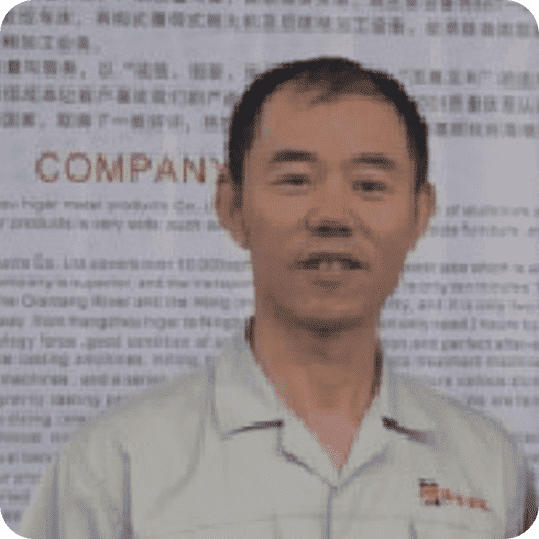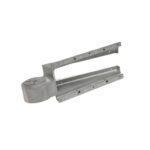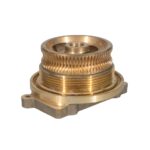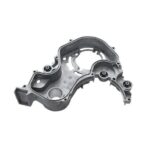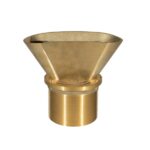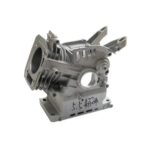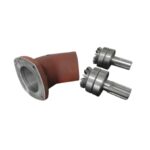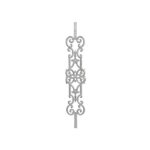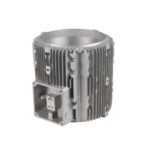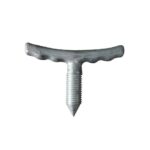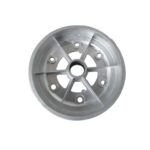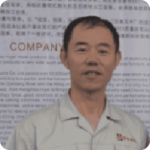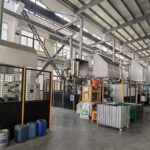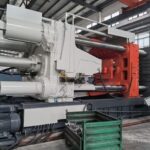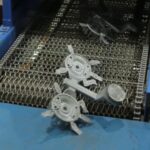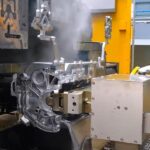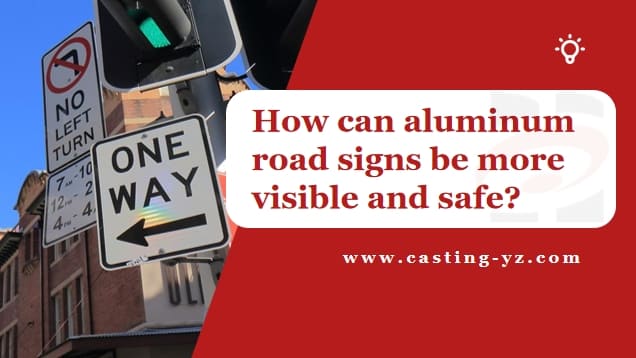
Why Road Signs Matter for Safety?
As urban development grows and road traffic becomes more complex, the importance of road signs cannot be overstated.
Road signs serve as crucial communication tools between road authorities and drivers. They guide us, warn us of dangers, and regulate the flow of traffic.
Over the years, the design and material of road signs and their supporting brackets have evolved to ensure maximum visibility and safety, making sure that drivers receive clear and timely information.
But have you ever wondered how the materials used in road sign support systems, like signpost brackets, play such a pivotal role in ensuring road safety?
Today, aluminum alloy is increasingly the material of choice for these structures. Let’s explore how aluminum alloy signpost brackets help improve the visibility and safety of road signs.
What Are Road Signs and What Types Are There?
Road signs are visual signals placed along or on roadways to guide, warn, or inform drivers about road conditions, traffic regulations, or potential hazards. There are several key categories of road signs:
- Regulatory Signs: These include speed limits, stop signs, and yield signs that inform drivers of rules they must follow.
- Warning Signs: These signs alert drivers to potential hazards or changes in road conditions, like curves, construction zones, or slippery roads.
- Guide Signs: These help drivers with directions, indicating highway routes, exits, or specific landmarks.
Historically, road signs date back to the early 20th century. The first road signs were basic and made from wood or metal, providing essential information like stop or yield signs.
Why Do Road Signs Use Specific Colors?
The color of road signs is not just for aesthetics. Each color has a significant meaning and is carefully chosen to communicate the urgency or importance of the message.
Here’s a breakdown of the common colors used in road signs:
| Color | Meaning |
|---|---|
| Red | Indicates stop, prohibition, or danger (e.g., stop signs). |
| Yellow | Used for caution and warning signs (e.g., curve ahead). |
| Green | Used for guidance (e.g., directional or highway signs). |
| Blue | Information signs (e.g., parking or directional info). |
| White | Regulatory signs (e.g., speed limits). |
The reason these colors are used is that they stand out well under various lighting conditions, making it easier for drivers to spot the signs in time to respond.
Did Road Signs Always Have Support Brackets?
In the early days of road signage, the design was relatively simple. The first road signs didn’t always come with a dedicated support system.
They were often nailed to wooden posts or placed on basic supports. As traffic increased and road systems grew more complex, it became necessary to install more durable and robust support systems.
In the early 20th century, materials like wood and basic metals were used for both the signs and their supports.
These materials didn’t offer the longevity and durability needed for modern roads. As the need for more durable materials grew, metal became the standard for both signs and brackets.
How Did Road Sign Support Materials Evolve?
Over time, road signs and their support systems saw an evolution in material use.
Early support structures were typically made of steel or iron, providing strength but also adding considerable weight. As infrastructure evolved, the need for lighter yet stronger materials became evident.
The Evolution of Road Sign Support Materials:
- Early Materials: Wood and basic metals (like steel and iron) were used for both the sign and its support.
- Shift to Metal: Steel, cast iron, and aluminum became common due to their strength, but they still lacked corrosion resistance and were heavy.
- Introduction of Aluminum Alloy: Aluminum alloy, a lighter and more corrosion-resistant material, started being used more widely due to its many advantages. Aluminum’s durability and lightweight nature made it ideal for signpost brackets, reducing the overall weight of road signs while maintaining strength.
Why Is Aluminum Alloy Now the Preferred Material for Signpost Brackets?
Aluminum alloy has rapidly become the material of choice for road sign brackets, and for good reason. Here are the main reasons why:
- Lightweight: Aluminum alloys are significantly lighter than steel or iron, making installation and maintenance easier.
- Corrosion Resistance: Aluminum naturally forms a protective oxide layer when exposed to the air, making it highly resistant to corrosion, particularly in outdoor environments.
- Durability: Aluminum alloys have a long lifespan, standing up to harsh weather conditions such as rain, wind, and extreme temperatures.
- Low Maintenance: Aluminum’s resistance to rust and corrosion means that the brackets require less maintenance over time, saving money on repairs.
By using aluminum alloy, road authorities ensure that the signposts are durable, low-maintenance, and more visible, especially in high-traffic areas where signs must endure the elements year-round.
How Do Signpost Brackets Impact Road Sign Visibility?
The structure of a road sign support bracket can greatly impact its visibility.
Aluminum alloy, due to its strength and light weight, allows for better sign positioning and sturdier construction, making the signs easier to spot by drivers.
How the Bracket Design Enhances Visibility:
- Height: Signpost brackets can be designed for optimal height to ensure maximum visibility, even at a distance.
- Minimal Visual Obstruction: A well-designed aluminum bracket reduces visual distractions, helping the road sign stand out more clearly.
- Adjustability: Aluminum brackets can be designed with adjustable features, allowing for precise alignment of the sign for maximum driver visibility.
By minimizing visual clutter and ensuring proper positioning, aluminum alloy supports increase the likelihood that road signs will be noticed by drivers, which can directly impact road safety.
As we continue to prioritize road safety and effective signage, aluminum alloy will play a crucial role in creating safer, more efficient roadways for everyone.
Searching for High-Quality for Cast Aluminum Parts?
You’ve come to the right place! Yongzhu Casting is a certified die casting manufacturer with over 20 years of expertise in the industry.
We have successfully completed numerous die casting projects for Aluminum casting parts, particularly in your industry.

Zhejiang Yongzhu Casting Technology Co., Ltd.
Location: Zhejiang, China
Company type: Manufacturers, Producers, Wholesalers
Year Founded: 2004
Main Products: Aluminium die casting, Mold Making, Die Casting, Sand Casting, Gravity Casting
Leading Chinese producer Yongzhu Casting is formerly known as Hangzhou Higer Metal Products Co., Ltd., was established in 2004.
With 20 years of experience in the industry, we are a specialized manufacturer in Aluminum casting and Machining.
Our products are widely used in various applications such as Automotive, Energy, Lighting, Medical, Home Furnishings, Machinery & Equipment etc. Below are our advantages:
1. Design Review & DFM Support
Our professionals will evaluate your designs and provide suggestions for cost savings. Additionally, we offer Design for Manufacturing (DFM) assistance and conduct mold flow analyses to facilitate efficient production.
2. State-of-the-Art Manufacturing Equipment
Our facility is equipped with advanced hot-chamber and cold-chamber die casting machinery for aluminum and zinc production.
We also utilize high-precision CNC machines in a temperature-controlled workshop, featuring 3-Axis, 4-Axis and 5-Axis setups to manage any project you have.
3. Rigorous Quality Control Measures
Our dedicated quality control team ensures that all parts meet the highest standards of quality and consistency. We employ high-accuracy measurement instruments, including CMM, spectrometers, and X-ray detectors.
4. Comprehensive Surface Treatment Options
We provide a variety of surface finishing techniques for your precision die casting components. Our in-house services include cleaning, polishing, anodizing, shot blasting, and painting.
5. Flexible Project Acceptance
While larger manufacturers often shy away from low-volume projects, and smaller ones may struggle with quality, Yongzhu Casting stands apart. We prioritize customer satisfaction and willingly accept high-mix, low-volume projects like yours.


